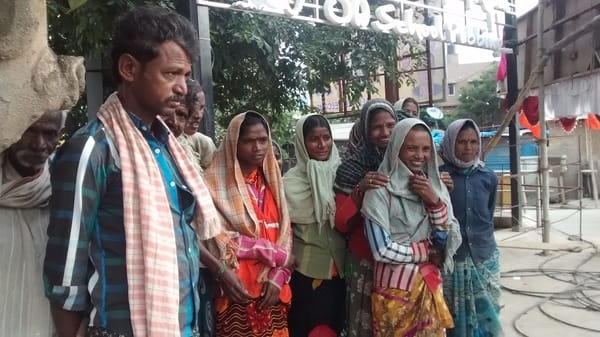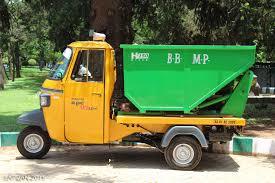October 2nd was Gandhi’s birth anniversary and a reminder of his vision of Clean India. Our Prime Minister Modi revived the dream two years back on this day by launching Swacch Bharat Mission.
We at Bellandur ward were fortunate to have passionate citizens to form Kasa Muktha Bellandur who introduced the 2bin1bag concept in 2012. Later, with the support of hundreds of volunteers across the city and solid waste managment round table, it became a law in December 2015 by the Karnataka high court. I am a new kid on the block in Waste management and had the privilege of diving deep into the system with experts to learn and get amazed by our system and laws in place.
Now cleanup drives, spotfixing and Swacch Bharat talks have become glamorous and main news items daily. Still we see Bangalore once a garden city, struggling to avoid becoming a garbage city. We come out on road cleaning garbage dumps, painting and reclaiming our spaces to keep Bengaluru clean. Now it’s time to look at sustainable solutions, understand our waste management and ensure that it is implemented right.
It’s time we knew how our waste management system works and how we can participate to achieve the vision of Clean India by segregating, reducing and composting. While “My waste My responsibility “ ensures that we generate waste responsibly, segregate and take care of what we can, it’s important to know our waste management system too. Awareness is first step of empowerment. Next time when we walk by a mustering point or see garbage trucks, we should all know how it works and what should be there for successful implementation of ward level waste management plans.
Bellandur ward has two waste management contracts given by BBMP.


Some of the terms we all need to learn:
Porakarmika [PK] – Street Sweeper

Gangman – Garbage truck driver, helper who picks up waste
Mustering Point: A place where Poura Karmikas (PK), gang men, supervisor should assemble at 6:30 am in the morning, attendance should be taken to ensure enough man power. Bellandur ward has four mustering points, for the area of the ward – 26.4 sqkm.
- Opposite Total Mall next to fire Station on Sarjapur Road
- Doddankannalli Bus Stop
- Panathur Road/ORR bridge opp. Papa John’s pizza
- Munnekollal
Cleaning shifts/Routine:
7:00 am to 10:00 am sweeping roads. Waste pickup from houses/small business generating less than 10 kg waste.
10:30 – 2:00 pm: Daily black spot cleaning, road silt cleaning, median cleaning.
DWCC – Dry Waste Collection Center – Each ward should have proper dry waste collection center where segregated dry waste should be sorted in different categories and send to recycling.
Allocation
There should be two Pourakarmikas for every half km stretch.
There should be one truck for every 750 household that forms a block.
Each ward should have microplan defining the pickup routes for garbage truck. We have one based on 2011 census.
With multifold growth of Bellandur, this plan needs to be revised based on actual number of waste generators.

Auto tipper truck
Bulk Generator
Any building having more than 40 houses, any business generating more than 10 kg of waste should have a contract with a bulk generator vendor. BBMP is not supposed to provide waste pickup services for bulk generators. The private vendors have full rights to refuse to pickup mixed waste which is not segregated as per 2bin1bag guidelines.
How citizens can get involved?
Anyone of us can walk to mustering point overseeing that
- PKs and trucks are coming as per contract.
- Trucks are coming as per contract.
- Trucks have either partition or drum to collect segregated waste.
- PKs have right equipment and safety gear (mask, gloves, boots, broom, drum etc).
- PKs are sweeping and collecting the waste, NOT burning or dumping into drains.
- Each truck should have route number ward Number- route number [eg 150-1, 150-2]
- Each PK should have ID card with a unique number that is matching register.
- There is attendance register and attendance is taken in presence of a BBMP official.
Each block of 750 houses can have one citizen volunteer as Suchi Mitra who will work with BBMP to ensure that daily garbage pickup is happening and PKs are sweeping streets in their blocks.
If roads are not swept daily, segregated waste is not picked up, waste is dumped on unauthorized sites, segregated waste is mixed in truck, trucks are not clean, all of us should report to BBMP by BBMP Sahaya app or website OR ichangemycity and follow up with assigned BBMP official.
https://docs.google.com/document/d/1xTgG7k8xfSAgdYZlS-eSMzicQlK5p5HvLWoKMJQqZCQ/edit?usp=sharing
If you have read till here, I am guessing that you want to know more details, all information is available on BBMP website. Let us work towards making our system works to make India clean.
P.S. All information is taken from BBMP website.
- Click here for Garbage tender
- Click here for Request for Proposal for Garbage Clearance.
Related Articles